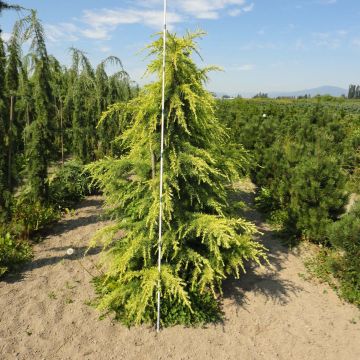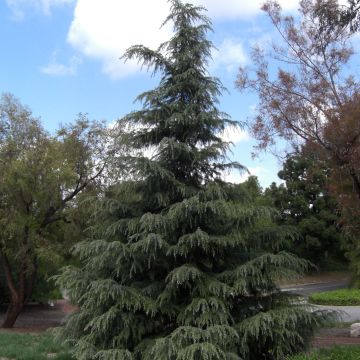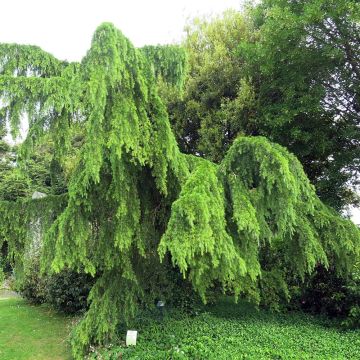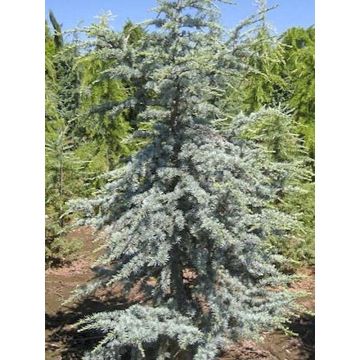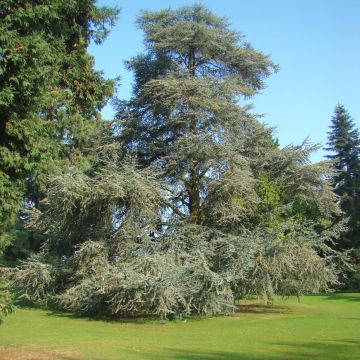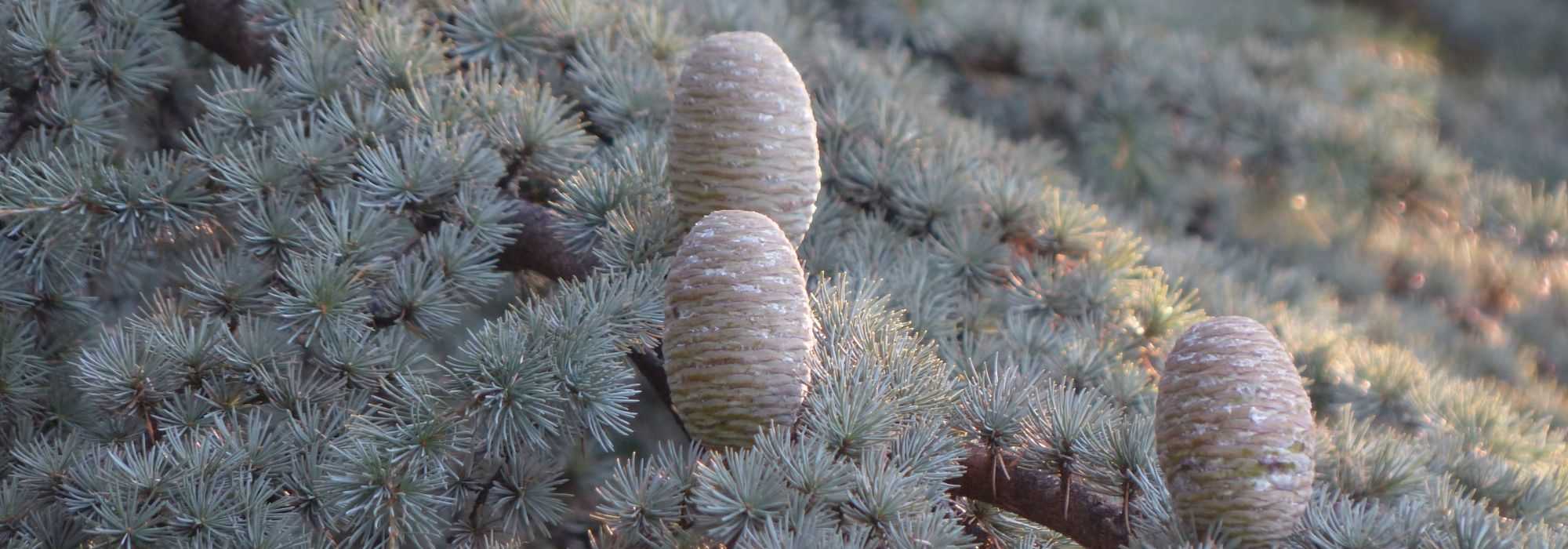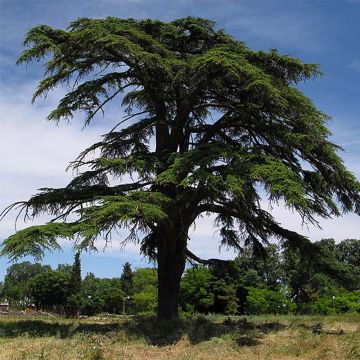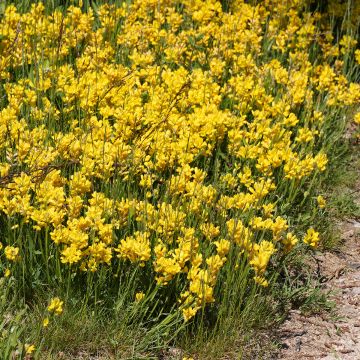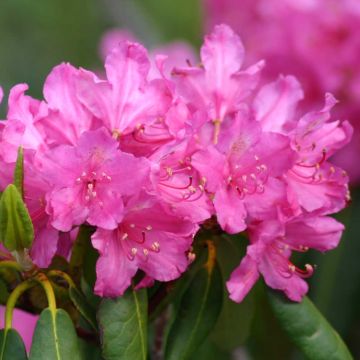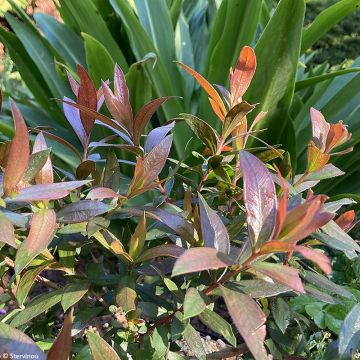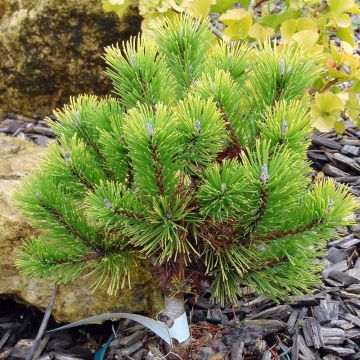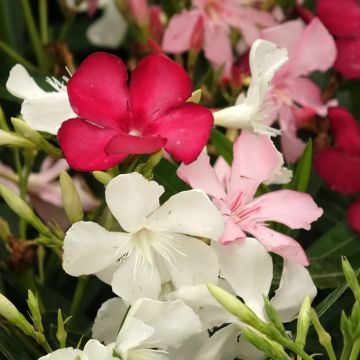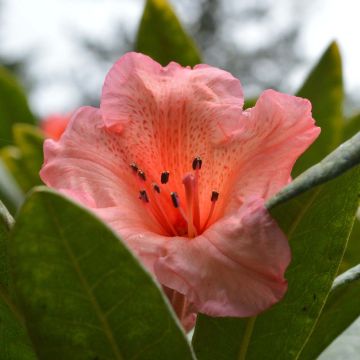

Cedrus deodara Golden Horizon - Himalayan Cedar
Cedrus deodara Golden Horizon - Himalayan Cedar
Cedrus deodara Golden Horizon
Deodar Cedar, Himalayan Cedar
Lovely little young plant received in October 2020. With a beautiful golden green color, it provides a bright spot in the garden that catches the eye! Lovely pyramidal habit, slightly weeping.
Denis, 02/06/2021
Special offer!
Receive a €20 voucher for any order over €90 (excluding delivery costs, credit notes, and plastic-free options)!
1- Add your favorite plants to your cart.
2- Once you have reached €90, confirm your order (you can even choose the delivery date!).
3- As soon as your order is shipped, you will receive an email containing your voucher code, valid for 3 months (90 days).
Your voucher is unique and can only be used once, for any order with a minimum value of €20, excluding delivery costs.
Can be combined with other current offers, non-divisible and non-refundable.
Why not try an alternative variety in stock?
View all →This plant carries a 24 months recovery warranty
More information
We guarantee the quality of our plants for a full growing cycle, and will replace at our expense any plant that fails to recover under normal climatic and planting conditions.

Would this plant suit my garden?
Set up your Plantfit profile →
Description
The Cedrus deodara 'Golden Horizon' is a dwarf Himalayan cedar with bright golden green foliage. It has a beautiful spreading conical habit and slightly weeping branches. At maturity, it does not exceed 2m (6 ft 7 in) in height and is ideal for small to medium-sized gardens, becoming one of the star plants in just a few years.
The Cedrus deodara belongs to the Pinaceae family. It is native to temperate high-altitude forests (between 1500 and 3000m (4921 ft 4 in and 9842 ft 6 in) above sea level) covering the southern foothills of the Himalayas. Its distribution range extends from Afghanistan to Tibet, India, Nepal, and Pakistan. The 'Golden Horizon' cultivar reaches an average height of 2m (6 ft 7 in) with a spread of 3m. It has a fast growth rate and a generally conical and dense habit. It develops a very vertical trunk covered with a dark grey, cracked bark in large irregular scales. Its branches, almost horizontal, bear trailing secondary branches. The terminal shoots, also trailing, give it a slightly weeping appearance. The crown of this cedar does not flatten over the years. The needles are grouped together in clusters. Measuring 3 to 5cm (1.2 to 2 in) long, they are flexible and golden yellow when they emerge, becoming yellow-green in summer. In full sun, its foliage will be lighter than in shade. Female and male cones coexist on the same tree. They measure from 7 to 12cm (2.8 to 4.7 in) long and 5 to 9cm (2 to 3.5 in) wide. They are composed of fine scales, each housing a seed extended by a wing. These large seeds will germinate very easily after winter and exposure to cold.
The Cedrus deodara 'Golden Horizon' is a graceful conifer that is preferably planted as a standalone specimen to enjoy its beautiful silhouette. Its limited size allows it to fit into any garden, even small ones. Multiple plants can also be planted along a pathway. This pathway will then take on a completely different dimension and a style that is both original and romantic. Space the trees sufficiently so that they do not overcrowd each other later on. Surprisingly, the sacred cedar also lends itself very well to bonsai cultivation.
Cedrus deodara Golden Horizon - Himalayan Cedar in pictures
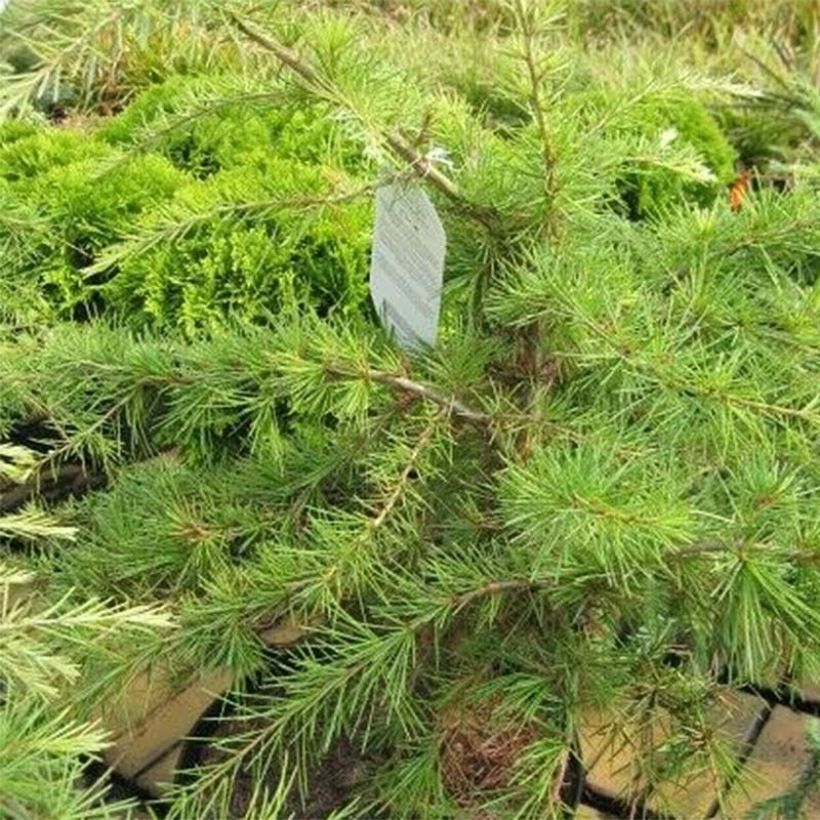

Plant habit
Foliage
Botanical data
Cedrus
deodara
Golden Horizon
Pinaceae
Deodar Cedar, Himalayan Cedar
Cultivar or hybrid
Other Cedar
View all →Planting and care
If you're planning on planting Himalayan cedar, there are a few things to keep in mind. These trees do best in humid climates during summer and can withstand cold weather. You can plant them in deep soil from September to November or February to June. The soil doesn't need anything special; avoid extremely acidic or chalky soil. Pick a sunny spot with plenty of space for the tree to grow. Don't disturb the tree after planting; its root system needs to anchor itself deeply to survive drought and wind. Water the tree regularly during the first few years, especially in summer. You can add organic amendments like soil improver or blood, fish and bone when planting. If you want, you can also apply a special fertiliser for conifers once a year in April and weed the soil in summer. You only need to prune the tree if you want it to grow in a specific shape or if branches die at the base of the trunk.
Planting period
Intended location
Care
Planting & care advice
-
, onOrder confirmed
Reply from on Promesse de fleurs
Similar products
Haven't found what you were looking for?
Hardiness is the lowest winter temperature a plant can endure without suffering serious damage or even dying. However, hardiness is affected by location (a sheltered area, such as a patio), protection (winter cover) and soil type (hardiness is improved by well-drained soil).

Photo Sharing Terms & Conditions
In order to encourage gardeners to interact and share their experiences, Promesse de fleurs offers various media enabling content to be uploaded onto its Site - in particular via the ‘Photo sharing’ module.
The User agrees to refrain from:
- Posting any content that is illegal, prejudicial, insulting, racist, inciteful to hatred, revisionist, contrary to public decency, that infringes on privacy or on the privacy rights of third parties, in particular the publicity rights of persons and goods, intellectual property rights, or the right to privacy.
- Submitting content on behalf of a third party;
- Impersonate the identity of a third party and/or publish any personal information about a third party;
In general, the User undertakes to refrain from any unethical behaviour.
All Content (in particular text, comments, files, images, photos, videos, creative works, etc.), which may be subject to property or intellectual property rights, image or other private rights, shall remain the property of the User, subject to the limited rights granted by the terms of the licence granted by Promesse de fleurs as stated below. Users are at liberty to publish or not to publish such Content on the Site, notably via the ‘Photo Sharing’ facility, and accept that this Content shall be made public and freely accessible, notably on the Internet.
Users further acknowledge, undertake to have ,and guarantee that they hold all necessary rights and permissions to publish such material on the Site, in particular with regard to the legislation in force pertaining to any privacy, property, intellectual property, image, or contractual rights, or rights of any other nature. By publishing such Content on the Site, Users acknowledge accepting full liability as publishers of the Content within the meaning of the law, and grant Promesse de fleurs, free of charge, an inclusive, worldwide licence for the said Content for the entire duration of its publication, including all reproduction, representation, up/downloading, displaying, performing, transmission, and storage rights.
Users also grant permission for their name to be linked to the Content and accept that this link may not always be made available.
By engaging in posting material, Users consent to their Content becoming automatically accessible on the Internet, in particular on other sites and/or blogs and/or web pages of the Promesse de fleurs site, including in particular social pages and the Promesse de fleurs catalogue.
Users may secure the removal of entrusted content free of charge by issuing a simple request via our contact form.
The flowering period indicated on our website applies to countries and regions located in USDA zone 8 (France, the United Kingdom, Ireland, the Netherlands, etc.)
It will vary according to where you live:
- In zones 9 to 10 (Italy, Spain, Greece, etc.), flowering will occur about 2 to 4 weeks earlier.
- In zones 6 to 7 (Germany, Poland, Slovenia, and lower mountainous regions), flowering will be delayed by 2 to 3 weeks.
- In zone 5 (Central Europe, Scandinavia), blooming will be delayed by 3 to 5 weeks.
In temperate climates, pruning of spring-flowering shrubs (forsythia, spireas, etc.) should be done just after flowering.
Pruning of summer-flowering shrubs (Indian Lilac, Perovskia, etc.) can be done in winter or spring.
In cold regions as well as with frost-sensitive plants, avoid pruning too early when severe frosts may still occur.
The planting period indicated on our website applies to countries and regions located in USDA zone 8 (France, United Kingdom, Ireland, Netherlands).
It will vary according to where you live:
- In Mediterranean zones (Marseille, Madrid, Milan, etc.), autumn and winter are the best planting periods.
- In continental zones (Strasbourg, Munich, Vienna, etc.), delay planting by 2 to 3 weeks in spring and bring it forward by 2 to 4 weeks in autumn.
- In mountainous regions (the Alps, Pyrenees, Carpathians, etc.), it is best to plant in late spring (May-June) or late summer (August-September).
The harvesting period indicated on our website applies to countries and regions in USDA zone 8 (France, England, Ireland, the Netherlands).
In colder areas (Scandinavia, Poland, Austria...) fruit and vegetable harvests are likely to be delayed by 3-4 weeks.
In warmer areas (Italy, Spain, Greece, etc.), harvesting will probably take place earlier, depending on weather conditions.
The sowing periods indicated on our website apply to countries and regions within USDA Zone 8 (France, UK, Ireland, Netherlands).
In colder areas (Scandinavia, Poland, Austria...), delay any outdoor sowing by 3-4 weeks, or sow under glass.
In warmer climes (Italy, Spain, Greece, etc.), bring outdoor sowing forward by a few weeks.






























